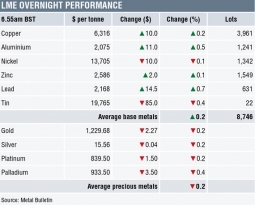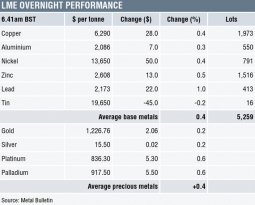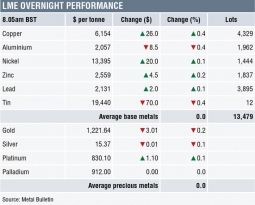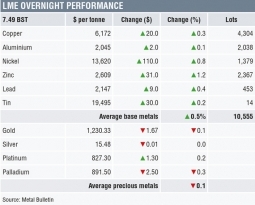The gold market consolidated after reaching a two-week high, with lagging physical demand and a rebounding dollar combining to apply pressure.
Gold futures for June delivery on the Comex division of the New York Mercantile Exchange tumbled $12.50 or one percent to $1,248.40 per ounce. Trade has ranged from $1,241.40 to $1,258.70.
The precious metal has benefitted from conflicted rhetoric from the Federal Reserve on when to raise rates and the general weakness in the global economy during the first quarter.
Still, physical demand is lacking, particularly in India and China – both are the largest physical markets in the world. In India, a jewellers strike since the beginning of March has suppressed demand.
“Softness in the physical market can broadly be explained by seasonality and price elasticity of buyers and scrap sellers,” Joni Teves, a strategist at UBS, said. “However, there is some validity to concerns on the back of slower growth expectations and currency depreciation across emerging market economies where gold physical demand tends to come from.”
Investors concerned about global growth saw their suspicions confirmed yesterday when the International Monetary Fund reduced its global growth forecast to 3.2 percent from 3.4 percent, citing continued economic vulnerability in emerging market continues and persistently slow growth in developed nations.
Global uncertainty has aided safe-haven assets like gold, while the introduction of looser monetary policies in Europe and Japan signalled to market participants that the economic recovery is vulnerable.
“Many market participants are becoming increasingly convinced that gold’s strength is real and that the market has entered a new phase,” Teves added.
Paper gold holdings continue to set new yearly for the fifth straight day with ETF’s tracked by FastMarkets seeing inflows of 0.51 tonnes to a 2016 high of 1,813 tonnes.
In a packed economic agenda, core retail rales and retail sales in March both unexpectedly disappointed coming in at 0.2 percent and -0.3 respectively – the forecasts called for gains of 0.4 percent and 0.1 percent.
PPI month-over-month in March stood at -0.1 percent, off the estimate of 0.3 percent gain, while core PPI – excluding energy and food components – over the same period slipped to -0.1 percent, missing the consensus of a 0.1 percent uptick.
Business inventories in February was in-line with projections at -0.1 percent, while crude oil inventories between April 1-8 was 6.6 million barrels, a stark divergence from the 1.0 million estimate.
Turning to US markets, the Dow Jones industrial average and S&P gained 0.9 percent and 0.7 percent, while the dollar strengthened 1.1 percent to $1.1280 against the euro.
“The dollar has been weak recently but it is attempting a rebound, which seems to be causing a headwind for gold,” William Adams, Head of Research at FastMarkets, said. “We are, however, bullish given the revival in investor demand (and what is driving that) and we expect there will be considerable pent-up demand for physical gold into price dips.”
As for other precious metals, Comex silver for May settlement reversed up 7.8 cents or 0.5 percent to $16.300 per ounce. Trade has ranged from $16.015 to $16.345.
Platinum for July delivery ticked up $2.10 or 0.2 percent to $1,001.80 per ounce, while the most-actively traded palladium contract stood at $544.55 per ounce, up 40 cents or 0.1 percent.
(Editing by Tom Jennemann)
The post Dollar strength, physical demand weakness ends gold rally appeared first on The Bullion Desk.
Read More
Source: Bullion Desk News








